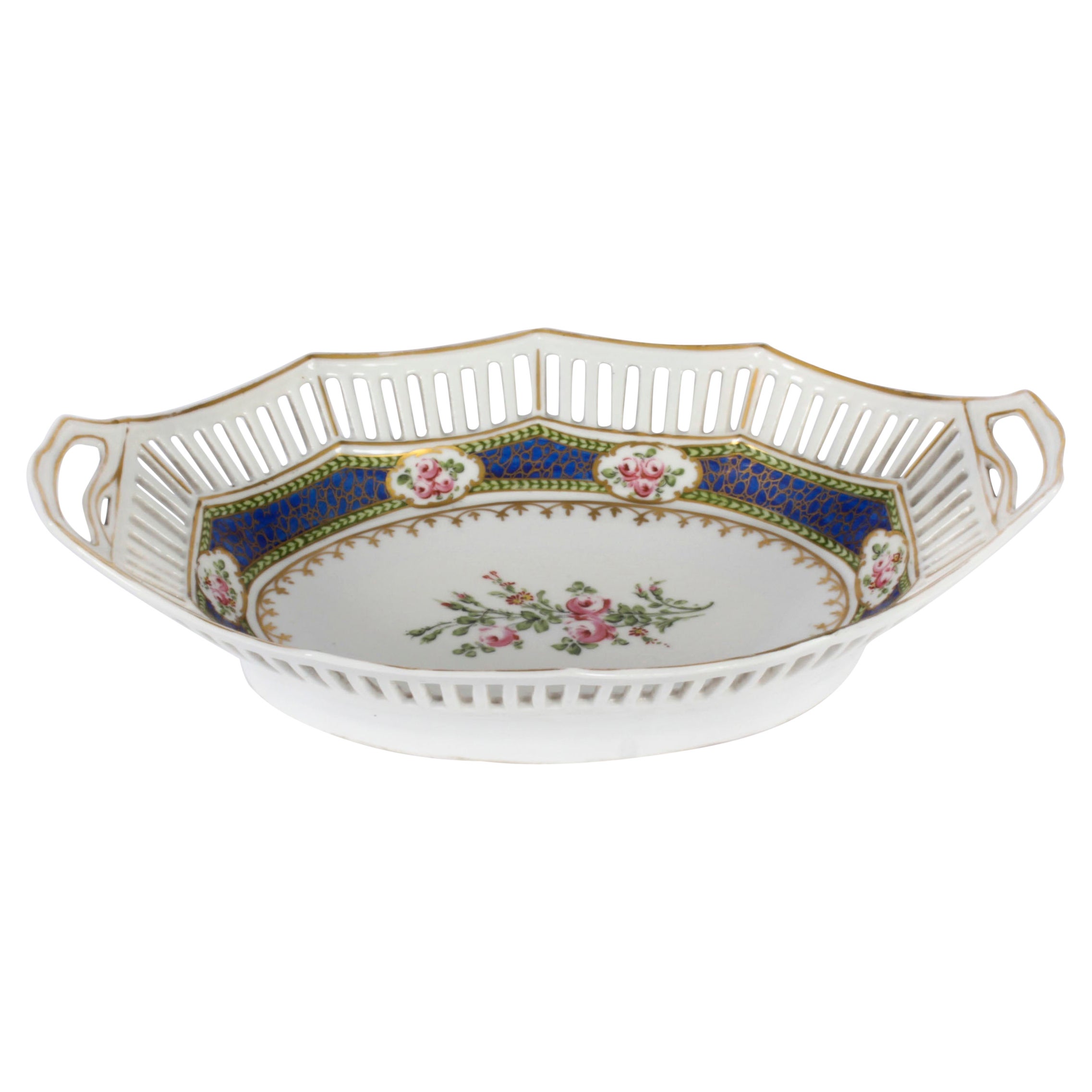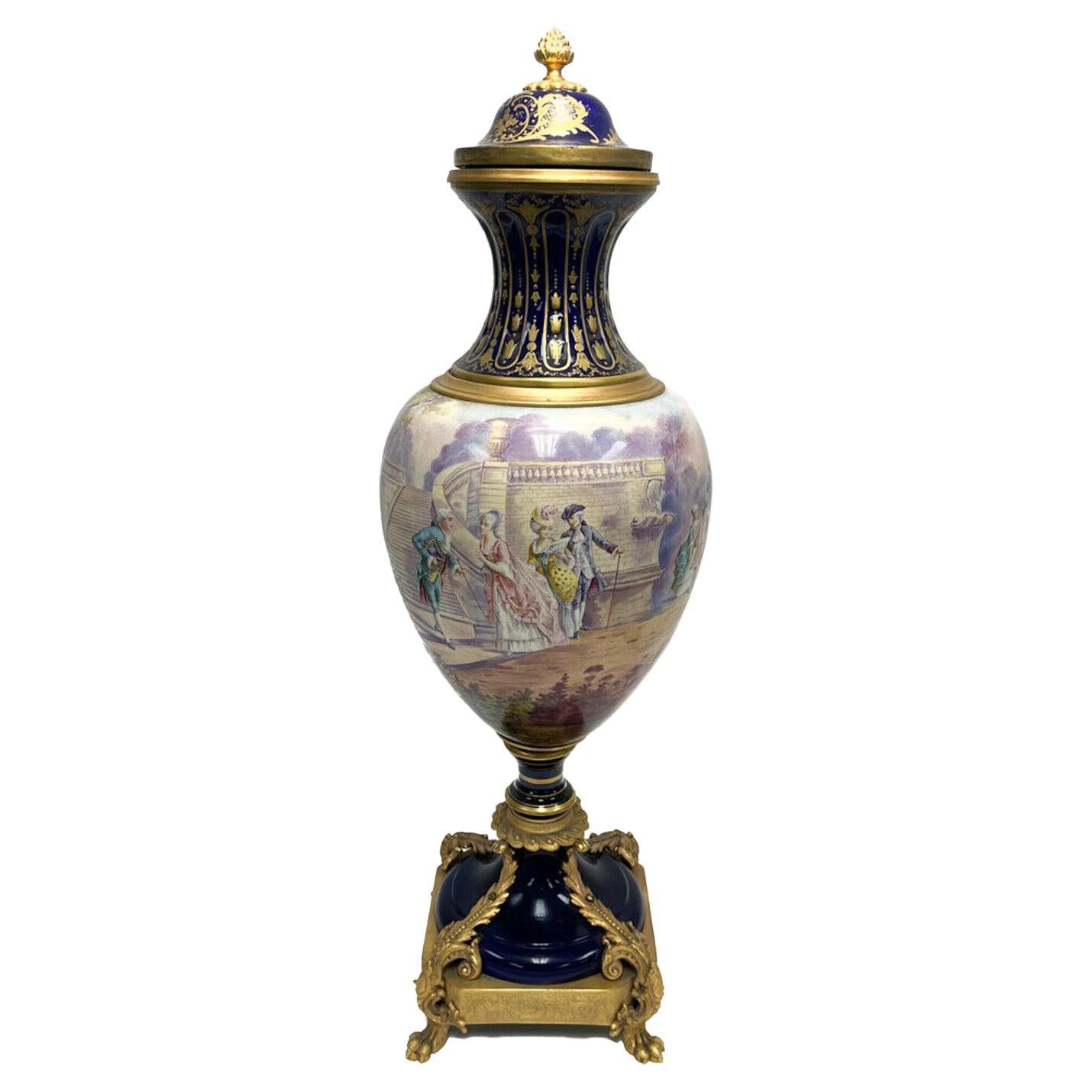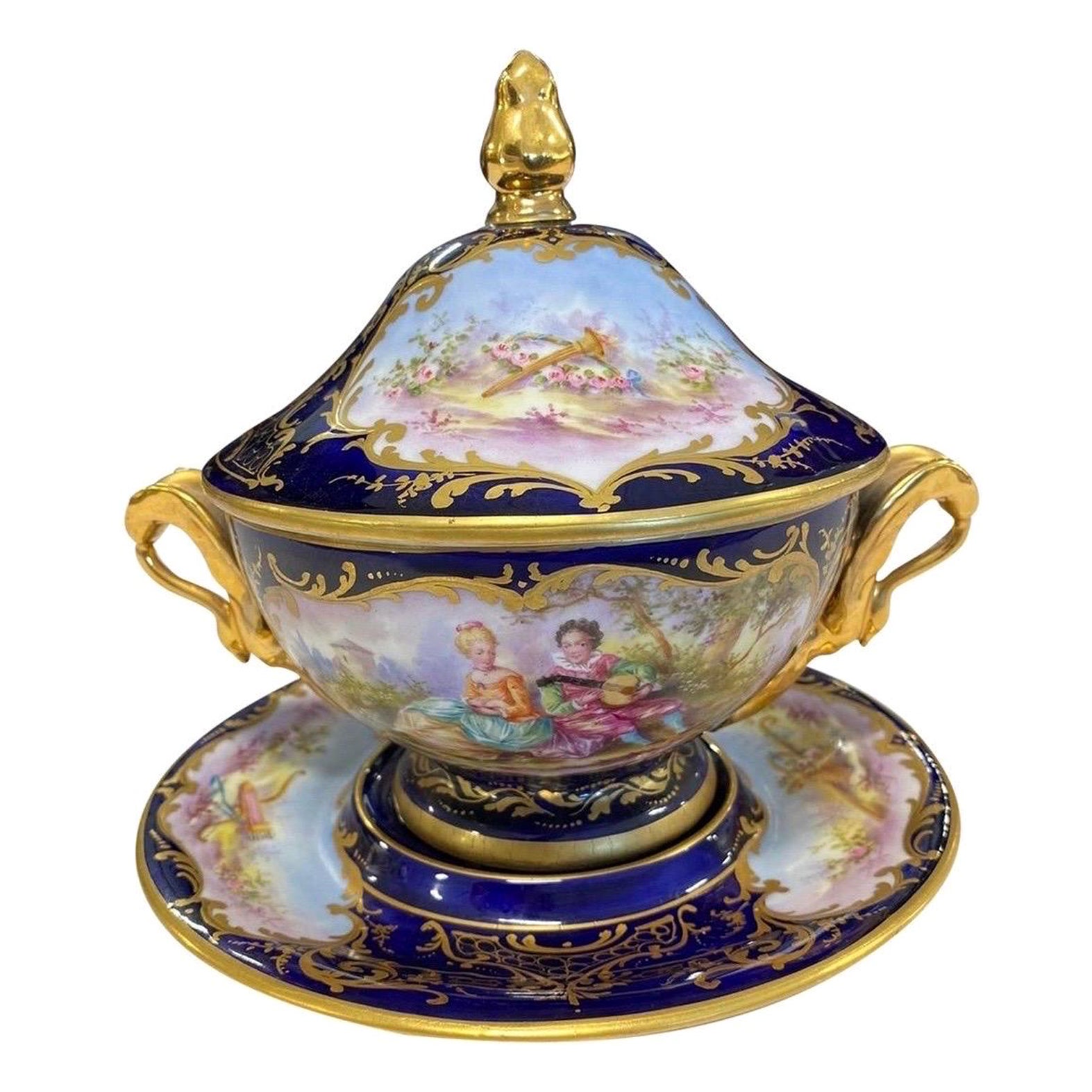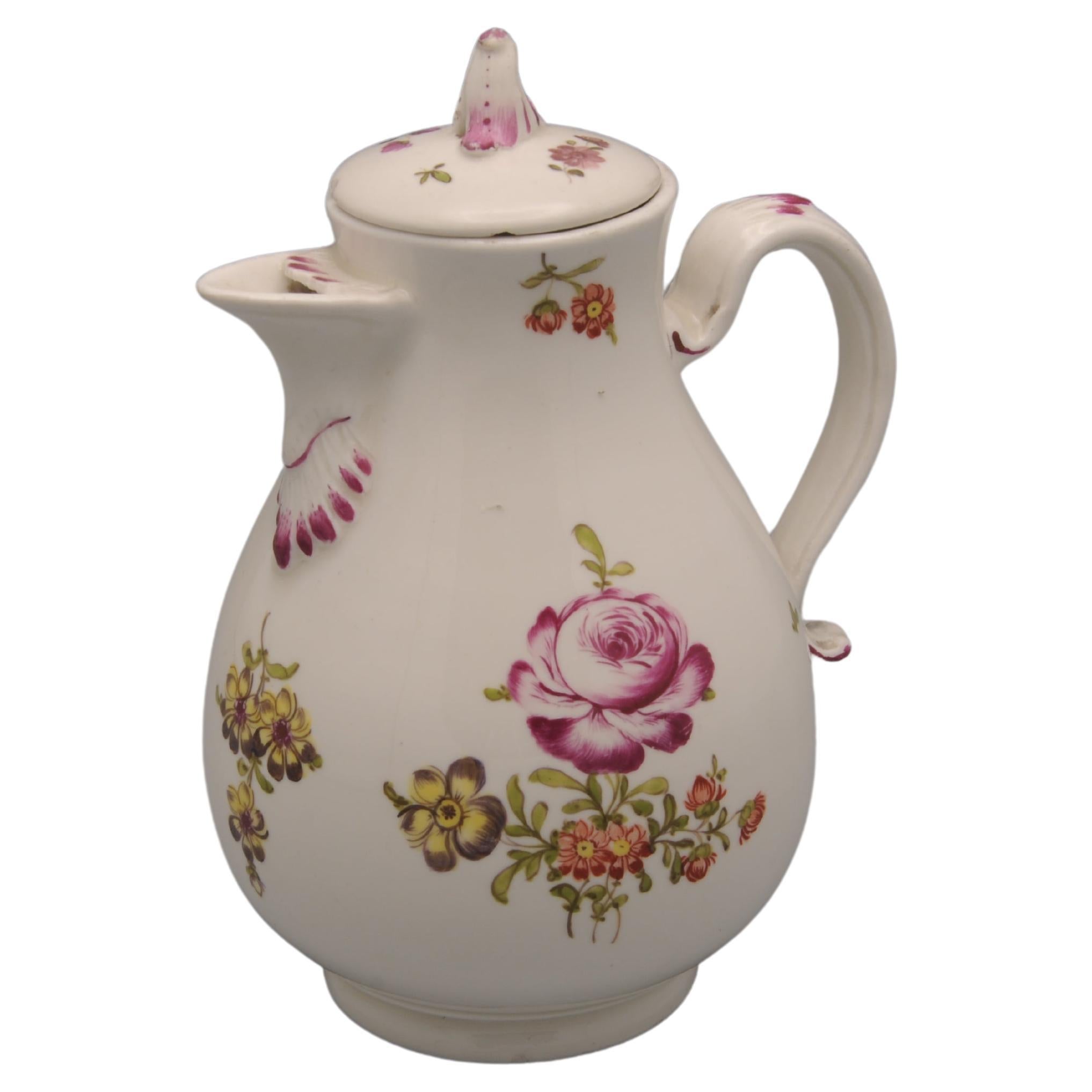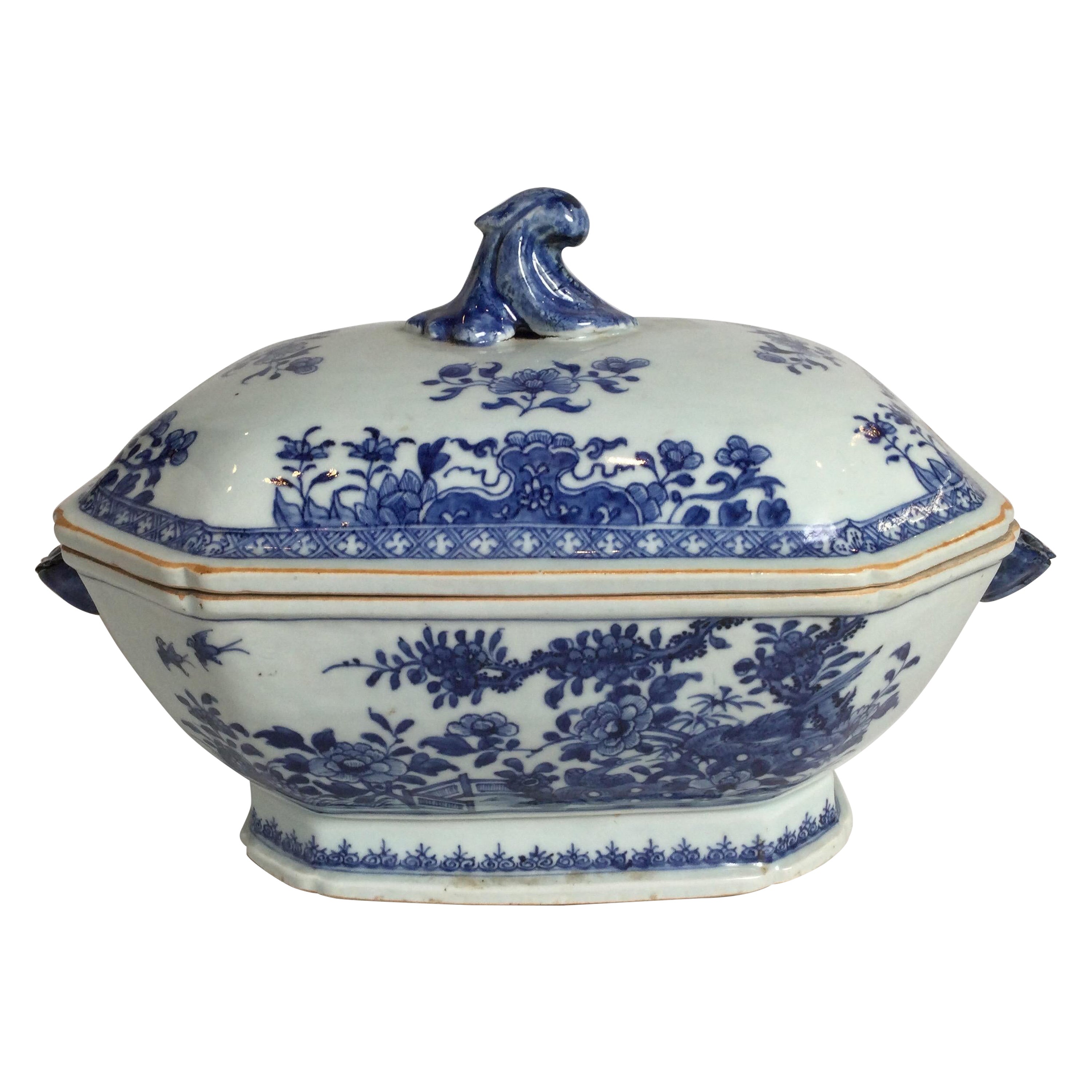Items Similar to Antique French Sevres Oval Porcelain Dish, Late 18th Century
Video Loading
Want more images or videos?
Request additional images or videos from the seller
1 of 16
Antique French Sevres Oval Porcelain Dish, Late 18th Century
About the Item
This is an important decorative antique French Sevres oval porcelain dish, the rear with underglaze blue interlaced LL factory Sevres mark, late 18th century in date.
The oval border is a striking Bleu Royal colour and the centre is masterfully hand painted with a scene depicting the Battle of Ravenna. The gilt and 'jewelled' fleur de lys border is interspersed with six panels hand painted with portraits. The rear bears the interlaced L marks for Sevres, and the names and titles of the portraits in blue.
There is no mistaking the quality and unique design of this charger which is sure to be a treasured addition to your home.
Condition:
In excellent condition with no chips, cracks or signs of repair, and only very minor signs of wear comensurate with age and use, please see photos for confirmation of condition.
Dimensions in cm:
Height 3 x Width 35 x Depth 25
Dimensions in inches:
Height 1 inch x Width 1 foot, 2 inches x Depth 10 inches
Sevres Porcelain
traces its roots in France to early craftsmen who had small manufacturing operations in such places as Lille, Rouen. St. Cloud, and most notably Chantilly. It is from Chantilly that a cadre of workers migrated to the Chateau de Vincennes near Paris to form a larger porcelain manufactory in 1738.
French King Louis XV, perhaps inspired by his rumoured relationship with mistress Madame de Pompadour, took an intense interest in porcelain and moved the operation in 1756 to even larger quarters in the Paris suburb of Sevres. Sevres was also conveniently near the home of Madame de Pompadour and the King's own Palace at Versailles.
From the outset the king's clear aim was to produce Sevres Porcelain that surpassed the established Saxony works of Meissen and Dresden. Though the French lacked an ample supply of kaolin, a required ingredient for hard-paste porcelain (pate dure), their soft-paste porcelain (pate tendre) was fired at a lower temperature and was thus compatible with a wider variety of colours and glazes that in many cases were also richer and more vivid. Unglazed white Sevres Porcelain "biscuit" figurines were also a great success. However, soft-paste Sevres Porcelain was more easily broken. Therefore, early pieces of Sevres Porcelain that remain intact have become rare indeed.
The Sevres Porcelain manufactory always seemed to be in dire financial straits despite the incredibly fine works it produced. In fact, the king's insistence that only the finest items be created may have contributed to the difficulties. Only a limited number of European nobility could afford the extravagant prices demanded for such works. King Louis XV and eventually his heir, the ill-fated Louis XVI, were obliged to invest heavily in the enterprise. Ultimately, the Sevres Porcelain Factory produced items under the name of "Royal" and thus the well-known Sevres mark was born. King Louis XV even mandated laws that severely restricted other porcelain production in France so as to retain a near monopoly for his Sevres Porcelain. The king even willingly became chief salesman for the finest of his products, hosting an annual New Year's Day showing for French nobility in his private quarters at Versailles. He eagerly circulated among potential buyers, pitching the merits of ownership and policing the occasional light-fingered guest.
Sevres Porcelain may have indeed given the makers of Meissen and Dresden a run for their money by the end of the 18th Century but for the French Revolution. By 1800, the Sevres Porcelain Works were practically out of business due to the economic devastation of the new French Republic.
About the time when Napoleon Bonaparte named himself Emperor of France (1804), a new director was named for the Sevres Porcelain Manufactory. Alexandre Brongniart, highly educated in many fields, resurrected Sevres Porcelain. Soft-paste porcelain was eliminated altogether thanks to the earlier discovery of kaolin near Limoges. For four decades until his death, Brongniart presided over monumental progress for Sevres Porcelain, catering not only to Napoleon himself, but at last to include the more financially profitable mid-priced market in the emerging middle class.
The Battle of Ravenna, fought on 11 April 1512, was a major battle of the War of the League of Cambrai. It pitted forces of the Holy League against France and their Ferrarese allies. Although the French and Ferrarese eliminated the Papal-Spanish forces as a serious threat, their triumph was overshadowed by the loss of their young general Gaston of Foix. The victory therefore did not help them secure northern Italy. The French withdrew entirely from Italy in the summer of 1512, as Swiss mercenaries hired by Pope Julius II and Imperial troops under Emperor Maximilian I arrived in Lombardy. The Sforza were restored to power in Milan.
- Dimensions:Height: 1.19 in (3 cm)Width: 13.78 in (35 cm)Depth: 9.85 in (25 cm)
- Materials and Techniques:
- Place of Origin:
- Period:1790-1799
- Date of Manufacture:circa 1790
- Condition:
- Seller Location:London, GB
- Reference Number:
About the Seller
5.0
Platinum Seller
These expertly vetted sellers are 1stDibs' most experienced sellers and are rated highest by our customers.
Established in 1983
1stDibs seller since 2012
1,198 sales on 1stDibs
Typical response time: 1 hour
Associations
LAPADA - The Association of Arts & Antiques Dealers
- ShippingRetrieving quote...Ships From: London, United Kingdom
- Return PolicyA return for this item may be initiated within 14 days of delivery.
More From This SellerView All
- Antique French Sevres Oval Porcelain Dish Late 19th CenturyLocated in London, GBThis is a decorative antique French Sevres oval porcelain dish, dating from Circa 1880. The oval pierced borderwith gilt highlights with a striking Bleu Royal inner border, the cent...Category
Antique 1880s French Porcelain
MaterialsPorcelain
- Antique Large French Sevres Porcelain Casket 19th CenturyLocated in London, GBThis is a fabulous, larger than usual, antique French Sevres porcelain ormolu mounted casket, Circa 1860 in date. The shaped hinged cover decorated with a hand painted courting cou...Category
Antique 1860s French Porcelain
MaterialsPorcelain
- Antique French Sevres Cobalt Blue Porcelain Casket 19th CenturyLocated in London, GBThis is a fabulous antique French Sevres porcelain Cobalt Blue ormolu mounted casket, Circa 1880 in date. The shaped hinged cover decorated with a...Category
Antique 1880s French Porcelain
MaterialsPorcelain
- Antique French Sevres Porcelain and Ormolu Jewelry Casket, 19th CenturyLocated in London, GBThis is a fabulous antique French Ormolu and Sevres Porcelain jewelry casket, circa 1870 in date. This magnificent casket is rectangular in shape, with the top as well as each sid...Category
Antique 1870s French Porcelain
MaterialsOrmolu
- Antique French Sevres Porcelain Gilt Plate "Prise de Valence", 19th CenturyLocated in London, GBThis is a beautiful antique French Sevres porcelain cabinet plate, dating from the late 19th century. This superbly hand painted plate feat...Category
Antique 1890s French Porcelain
MaterialsPorcelain
- Antique French Sevres Porcelain Cabinet Plate "Camp du Rap" 19th CenturyLocated in London, GBThis is a beautiful antique French Sevres porcelain cabinet plate, Circa 1880 in date. It is superbly hand painted plate and features a ce...Category
Antique 1880s French Porcelain
MaterialsPorcelain
You May Also Like
- 18th Century Worcester Blind Earl Porcelain DishBy James Giles, 1st Period Worcester Dr. WallLocated in Fort Lauderdale, FLA Worcester Blind Earl porcelain plate made circa 1770 with beautifully enamelled decoration of butterflies and insects among raised leaf and rose...Category
Antique 1770s English Rococo Porcelain
MaterialsPorcelain
- Sevres France Porcelain Large Decorative Urn, Late 19th CenturyLocated in Gardena, CASevres France porcelain large decorative urn, Late 19th Century. The central band depicting various period era court scenes. Artist signed "C.Velly" to the center edge. A cobalt blue...Category
Antique 19th Century Porcelain
MaterialsPorcelain
- 19th Century French Sevres Style Cobalt Porcelain Lidded “Courting” DishLocated in Atlanta, GAA stunning 19th century french Sevres style porcelain “Courting” Scene covered dish and under plate.Category
Antique Late 19th Century Porcelain
MaterialsEnamel
- Vienna Porcelain - Rococo Coffeepot, late 18th centuryLocated in DELFT, NLVienna Porcelain Coffee or Mokka pot with floral decoration and Rococo ornaments on the lid and handle. Product of the Vienna Porcelain Manufactory (German: Kaiserlich privilegiert...Category
Antique Late 18th Century Porcelain
MaterialsPorcelain
- Late 18th Century Chinese Porcelain Covered TureenLocated in Lambertville, NJElegant circa 1790 Nanking Chinese porcelain hand painted blue and white tureen in excellent condition, no repairs.Category
Antique 18th Century Chinese Chinese Export Ceramics
MaterialsPorcelain
- Antique English 18th Century Rare First Period Worcester Porcelain Saucer DishBy 1st Period Worcester Dr. WallLocated in Charleston, SCExceedingly rare and fine antique English First Period Worcester Porcelain Saucer dish with exceptionally rare under-glaze workmen's Worcester mark. A/F chip on rim (and priced a...Category
Antique Mid-18th Century English Serving Pieces
MaterialsPorcelain
Recently Viewed
View AllMore Ways To Browse
April Antiques
Antique Market Paris France
Antique French Blue Porcelain
White Sevres
18th Century Chateau
French With Porcelain Panels
French Sevres Fine Porcelain
18th Century Napoleon
White Porcelain Sevres
French Italian Panel
Antique Quarters
18th Century Decorative French Panels
European Antique Portrait
Louis Xvi Sevres Porcelain
Oval Glass Case
Napoleon King
Day Date Factory
Large Sevres Porcelain
